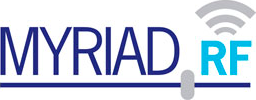I wonder would it be possible to use the LimeSDR as a Tracking Generator for use with a Spectrum Analyzer with a Local Oscillator output? Could one of the clockgens be configured as a static IF and the mixer coded in the FPGA with the output tracking the IF - input?
For sure must be possible… but performance can be the issue.
Take look on Lime CW output with average SA and make own judgement.
73
Djani
By adjusting decimation, sampling rate, and output level, I have been able to get a clean output. I have seen it look very messy.
I think qspectrumanalyzer has a good beginning for a tracking generator. The VNA example in pyLMS7002M is also a good beginning. I don’t think you need the FPGA to do the work.
Doing it in software would introduce too much latency I think. This is for use with a hardware SA.
The idea is that the hardware SA generates an LO that is used to sweep the log amp internally, and to supply a frequency to the TG. The TG mixes the LO from the SA with the same IF as used in the first mixing stage in the SA. This then generates a sweeping signal to be fed into some device for testiing.
Using the Lime and detecting the input frequency in software, and then doing the math and retuning in software would mean that be the time the signal was generated by the Lime, the sweep on the SA would have moved on, so the response shown would be incorrect.
Usually this sort of thing is done in hardware, but I was thinking it might be possible to ‘hardwire’ the frequency translation in the FPGA.
I see. I was thinking of using the Lime to do the rf output and input in sync (or offset) and have it output the sampled readings for further processing. It definitely looks like something the FPGA could do either way.
